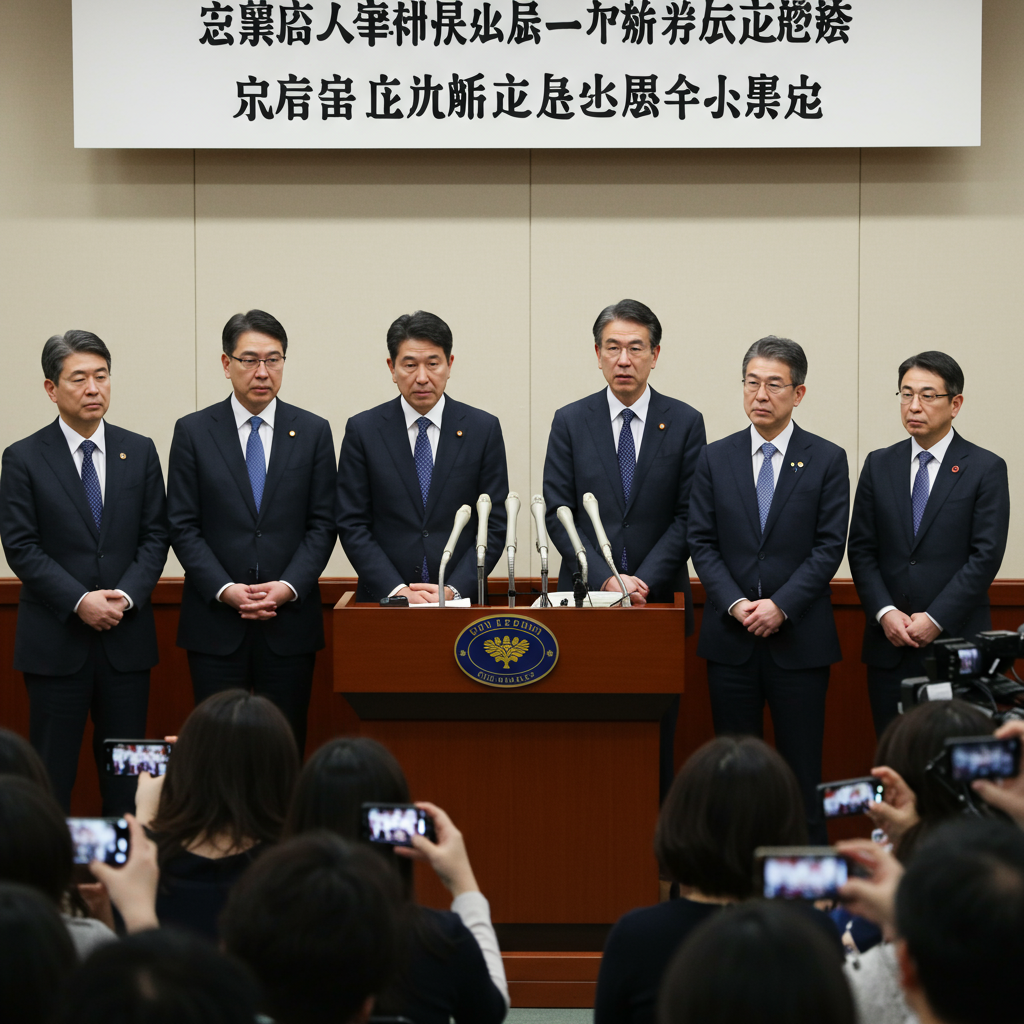Recent <a href="https://news.quantosei.com/2025/07/05/japan-braces-for-more-quakes-authorities-dismiss-doomsday-hype/” title=”Japan Warns of More Quakes, Authorities Dismiss Doomsday Hype”>seismic activity near Japan’s southern islands has ignited a firestorm of online speculation and fear. A series of tremors off the coast of Kyushu, the southernmost main island, particularly in the waters near Kagoshima prefecture, has prompted official warnings. However, authorities are simultaneously working to dispel unfounded rumors of an impending catastrophic event, which appear to be fueled by interpretations of a popular manga comic.
Japan is renowned for its high level of seismic activity. It sits squarely on the Pacific Ring of Fire, a zone where multiple tectonic plates collide. This geological reality means earthquakes are a frequent occurrence, a fact residents are generally well-prepared for. However, a recent cluster of shakes has coincided with viral online discussions centered on a decades-old comic book, creating a potent mix of genuine concern and misinformation.
Understanding the Recent Seismic Activity
In the past few weeks, the islands surrounding Kagoshima prefecture have experienced a significant swarm of earthquakes. Data indicates more than 1,000 tremors have occurred in this specific area. While many of these were minor, the sequence included a notable 5.5 magnitude quake. This tremor was strong enough to be widely felt and caused temporary difficulty standing for those in the vicinity.
Following this activity, officials took precautionary measures. Authorities on Friday carried out evacuations of some residents from remote islands situated closest to the epicenter of the 5.5 magnitude event. This highlights the government’s commitment to safety in seismically active zones, reacting swiftly to potential risks even from moderate quakes in sensitive locations. The Japan Meteorological Agency (JMA) continues its intensive monitoring of the region. They specifically warned on Saturday that more strong earthquakes could potentially occur in the same waters southwest of Japan’s main islands.
Debunking the Doomsday Prophecies
Parallel to the scientific monitoring and official warnings, a different narrative has gained traction online. This involves interpretations of the manga titled “The Future I Saw” by artist Ryo Tatsuki. First published in 1999 and re-released in 2021, the comic contains panels that some readers have interpreted as predicting a major disaster in Japan around the current timeframe.
Social media platforms and online forums have been buzzing with discussions connecting the recent seismic swarm to these perceived predictions. This has created significant anxiety and, according to some reports, even influenced travel plans. Data suggests arrivals from destinations where these rumors have circulated widely, like Hong Kong, saw a noticeable dip in May compared to the previous year. This occurred despite Japan otherwise experiencing record-breaking visitor numbers this year, highlighting the tangible impact of such online rumors.
The Artist and the Science Weigh In
Crucially, the creator of the manga, Ryo Tatsuki, has distanced herself from these doomsday interpretations. Her publisher issued a statement quoting Tatsuki saying she is “not a prophet.” This directly contradicts the narrative circulating online that her work provides an accurate prophecy of future events.
Scientific experts are also clear on the matter. Ayataka Ebita, director of the Japan Meteorological Agency’s earthquake and tsunami monitoring division, addressed the speculation directly. He stated emphatically that predicting the exact time, place, or scale of an earthquake is exceptionally difficult with current scientific knowledge. Speaking at a news conference after another shake – a 5.4 magnitude quake on Saturday – Ebita urged the public to ground their understanding in scientific evidence, not unfounded predictions or interpretations of fictional works.
The Science of Earthquake Prediction: Why It’s So Difficult
Understanding why authorities dismiss specific doomsday predictions requires a grasp of earthquake science. While seismologists can monitor seismic activity and identify areas prone to quakes based on tectonic plate movements and historical data, predicting when and where a major earthquake will strike with precision remains one of the biggest challenges in geoscience.
Current monitoring relies on seismometers detecting ground motion, GPS measuring subtle crustal deformation, and studying geological faults. Scientists can assess probabilities of future quakes in certain areas over long timescales (decades or centuries). They can also identify seismic gaps – fault segments that haven’t ruptured in a long time and might be building stress. However, the complex physics of fault rupture, deep beneath the Earth’s surface, involves countless variables that are impossible to measure and model accurately enough for short-term, specific predictions. Foreshocks (smaller quakes preceding a larger one) do occur, but not all large quakes have easily identifiable foreshocks, and not all swarms of small quakes lead to a major event. The recent activity near Kagoshima falls into the category of a swarm that is being closely watched, but it does not constitute a predictable precursor to a specific “big one” based on current science.
Japan’s Geological Reality and Preparedness
Japan’s position along the Pacific Ring of Fire makes it one of the world’s most seismically active countries. It experiences approximately 20% of the world’s earthquakes of magnitude 6.0 or greater. This constant seismic threat has profoundly shaped Japanese society, culture, and infrastructure.
The nation has some of the most stringent building codes in the world, designed to make structures resilient to significant shaking. Early warning systems utilizing seismic sensors across the archipelago provide precious seconds or minutes of notice before strong shaking arrives, allowing for actions like stopping trains, shutting down factories, and sending alerts to mobile phones. Public education on earthquake preparedness is widespread, covering actions to take during a quake, tsunami evacuation routes, and building emergency kits. While no amount of preparation can eliminate risk, these measures significantly reduce casualties and damage compared to less prepared nations. The recent evacuation on remote islands is an example of these established protocols being put into action based on actual seismic data, not speculative forecasts.
The resilience built into Japan’s infrastructure and its public awareness campaigns are the result of centuries of living with seismic risk. Officials emphasize that relying on these proven scientific and preparedness strategies is the most responsible approach, rather than succumbing to fear driven by non-scientific sources like interpreted manga predictions.
The Danger of Misinformation During Natural Events
The episode highlights the potential for misinformation to spread rapidly, especially in the age of social media, and its ability to cause real-world consequences, such as impacting tourism. During times of natural uncertainty, verifiable information from trusted sources is crucial. Official meteorological agencies and government disaster management bodies are the authoritative voices providing data-driven assessments and safety guidance.
Fear and anxiety can make people vulnerable to believing sensational or conspiratorial narratives. Attributing seismic events to fictional prophecies, despite scientific explanations and the artist’s own denial, demonstrates the power of online rumors. Counteracting such misinformation requires clear communication from authorities and a public willingness to question unsubstantiated claims, instead relying on established scientific bodies like the JMA for accurate updates and advice.
Frequently Asked Questions
What is the Japan Meteorological Agency’s stance on earthquake prediction?
The Japan Meteorological Agency (JMA) monitors seismic activity intensely using scientific instruments. However, they explicitly state that with current scientific knowledge, it is not possible to predict the exact time, place, or scale of an earthquake. They focus on providing warnings based on ongoing seismic activity, assessing probabilities over long periods, and operating early warning systems, rather than forecasting specific major future quakes.
How frequent are earthquakes in Japan, and where can I find official information?
Earthquakes are very frequent in Japan due to its location on major tectonic plate boundaries within the Pacific Ring of Fire. The country accounts for about 20% of the world’s magnitude 6 or greater earthquakes. Official information and real-time updates on seismic activity, warnings, and advisories are provided by the Japan Meteorological Agency (JMA) through their official website and public broadcasts.
Is there scientific basis for the recent doomsday rumors linked to a manga?
No, there is no scientific basis for the recent doomsday rumors circulating online that are linked to interpretations of the manga “The Future I Saw.” The artist herself has stated she is not a prophet. Scientific experts, including those from the JMA, emphasize that precise earthquake prediction is not possible with current science and urge the public to rely on official, data-driven information rather than unfounded predictions or fictional interpretations.
Conclusion
While Japan continues to experience seismic activity – a constant reality for the island nation – the recent cluster of tremors off Kyushu is being closely monitored by scientific agencies. Alongside genuine geological activity, online rumors fueled by misinterpreted fictional works have unfortunately generated unnecessary fear and speculation about a looming disaster. Experts and authorities are unequivocal: there is no scientific basis for these doomsday predictions. They urge the public to disregard such unfounded hype and instead focus on relying on accurate information from the Japan Meteorological Agency and adhering to established disaster preparedness measures. Living in a seismically active region requires vigilance and readiness, grounded in science and official guidance, not fear driven by rumor.




